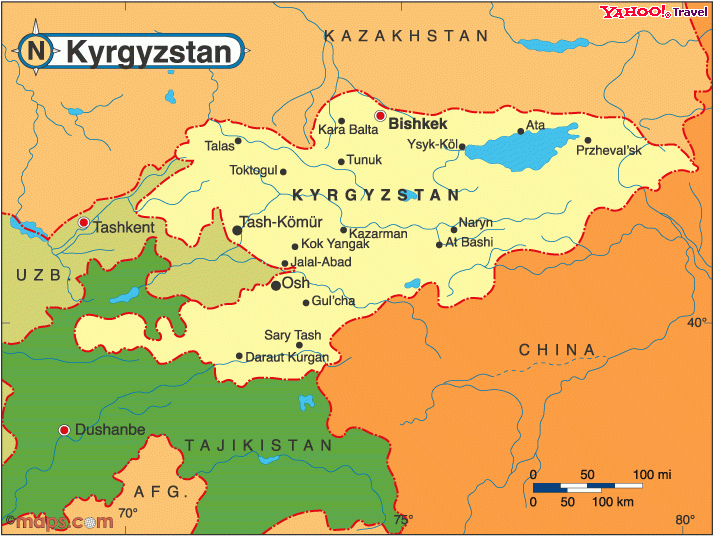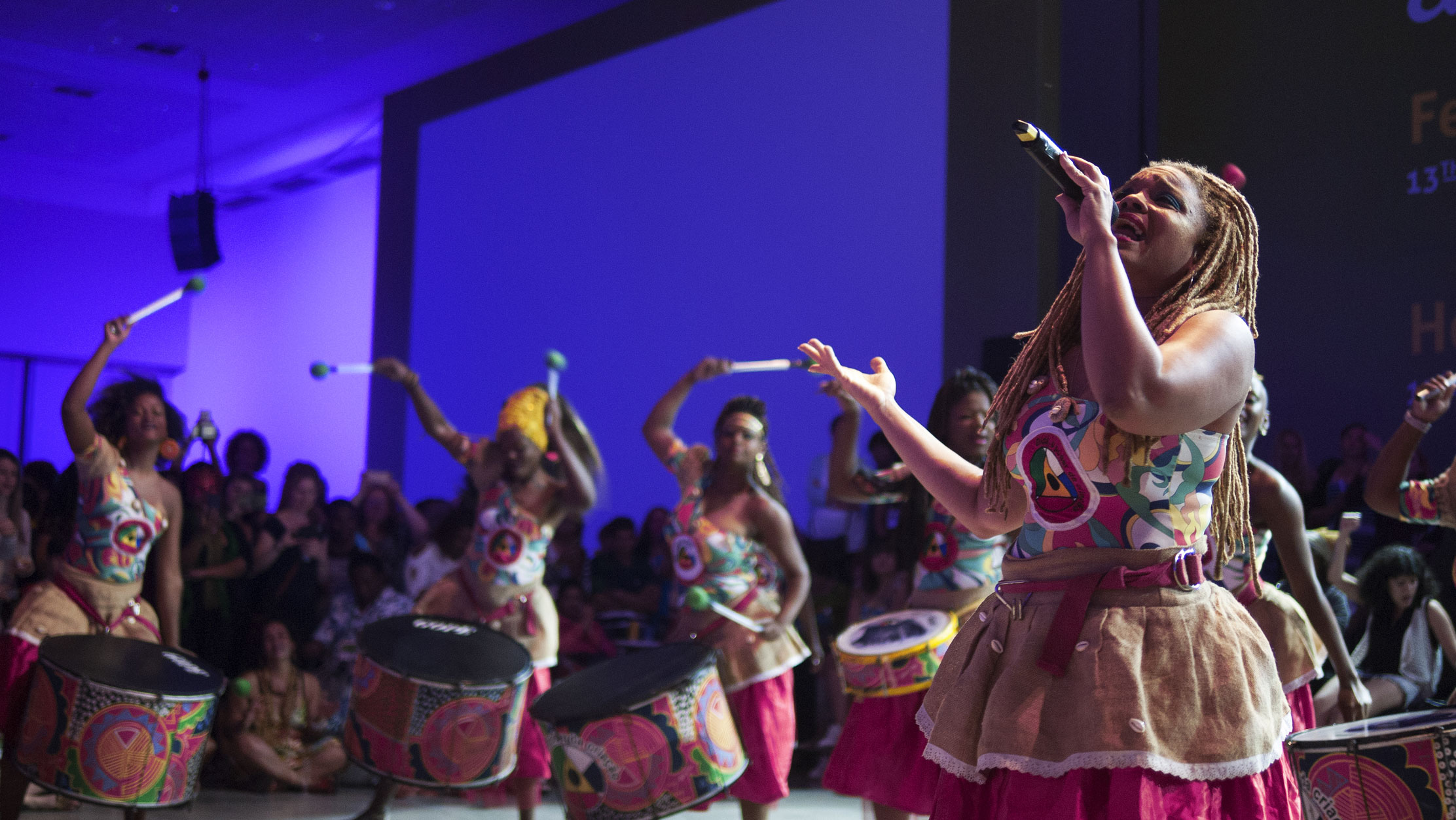FRIDAY FILE: Kyrgyzstan – a country in Central Asia – has been wracked recently by an outbreak of violence by some Kyrgyz there against ethnic Uzbeks. AWID analyses the events from a gender perspective.

In early June 2010, news began to emerge from southern Kyrgyzstan of an eruption of brutality and violence against ethnic Uzbeks living around Osh and Jalal-Abad in the Ferghana Valley. Uzbeks make up about 15 percent of the population in Kyrgyzstan, with more equal numbers of Kyrgyz and Uzbeks living in the Ferghana area.
Recently, organised gangs of Kyrgyzs raided ethnic Uzbek neighborhoods, setting homes and businesses ablaze and killing men, women and children. This is the worst violence seen in the region since 1990, when hundreds of people were killed. In June, around 100,000 people fled the ‘pogroms,’ moving across the border into Uzbekistan. The Uzbek government closed doors to all except the wounded on June 15 after receiving 75,000 refugees in a short span of time[1].
The Kyrgyz government reports that hundreds were killed, but human rights activists and international news sources, such as the Economist[2] are saying that thousands of people were killed over a period of just 3-4 days. Moreover, over 90% of refugees and the internally displaced were women and children[3]. Those who fled experienced emotional crossroads - feeling the anguish of being separated from their family members and wanting to find out what has happened to them, but also fear of returning to their homes, their Kyrgyz neighbors and the Kyrgyz authorities, whom they do not trust. At the time of writing, the Kyrgyz government stated that all 75,000 refugees who fled into Uzbekistan have now returned[4], but stories have emerged of refugees who remain in Uzbekistan out of fear of arrest, and of people being bullied into returning home.
Human rights activists report that Kyrgyz authorities have failed to curb the violence and have been complicit in some instances, “occasionally joining in”[5]. Umida Niyazova is an ethnic Uzbek activist based in Germany who has family and friends in Kyrgyzstan. In an interview with AWID, she reported that “two women human rights defenders from the local (Osh) organization "Air", who gave an interview to the foreign press about violence against women, are now refugees in Uzbekistan because they have been declared wanted and are threatened with arrest.”
Niyazova said that, during a time where there should have been every effort to bring a fair and unbiased investigation of the events and to analyze the cause of the conflict, the Kyrgyz authorities instead began "cleansing" in Uzbek neighborhoods. For example, on June 22, during a raid in the village of Nariman, witnesses reported seeing the military burning people’s passports and saying, "you're not worthy of being citizen of Kyrgyzstan." On the same day, under the pretext of weapon seizures, women were beaten for no reason and three men were killed. According to Niyazova, instead of investigating these atrocities, the Kyrgyz government began arresting Uzbek activists who were gathering information.
A recent human rights report concludes that “by asserting its power without providing protection, acknowledgment or accountability, Kyrgyz officialdom appears to be actively, if unwittingly, participating in a downward spiral of instability”[6].The future stability of Kyrgyzstan remains tenuous despite much of the violence subsiding in the last few days.
A gendered conflict
To date, reporting on the conflict has been mostly articulated along ethnic lines and has lacked a thorough gender analysis. This is despite the pogroms being overtly gendered, and militarism itself being gendered. Sexual violence and the specific targeting of women are sadly known to be tools of war and conflict[7]. The Vietnam war, for example, was particularly gruesome for Vietnamese women who were seen by American soldiers as a manifestation of a despised ideological and racial ‘other’ that could be dominated because they were physically weaker[8]. In most conflict situations, women are often used by the ‘enemy’ to manipulate soldiering men because a woman’s stereotypical gender role rouses the masculine ‘protector’ of the home front, meaning that any attack on women becomes an assault on men’s and national honor.
The violence in Kyrgyzstan has been no different. Many Uzbek women in Kyrgyzstan have been humiliated, raped and murdered. Niyazova conveyed a shocking story from one woman who witnessed her pregnant Uzbek neighbor dragged into the street and murdered by a gang of Kyrgyz who cut her unborn child out of her body amid laughing and roaring crowds. Abhorrent stories such as these illustrate the sheer cruelty of the violence perpetrated against Uzbek women
And the scope of sexual violence extends beyond the conflict itself. For example, women are often left to deal with the aftereffects of rape on their own when the fighting stops – including “physical and psychological trauma, sexually-transmitted infections, unwanted pregnancy, chronic infections and fertility problems and even ostracization from their family or community”.[9]
In addition to the violence, some women who did not make it to the border were reportedly asked by Kyrgyz soldiers for large sums of money to protect them and transfer them to safety.[10]. The same report tells of two busloads of women and children who were meant to be transferred to the border, but instead were taken to a nearby town where they were locked up. Their families were allegedly requested to pay thousands of dollars for their release.
A complex conflict
Peacemakers and policymakers are still trying to understand the roots of this multidimensional conflict. Suspected in stoking the fire of already existing ethnic tensions is ousted former leader Kurmanbek Bakiyev.[11]
A more nuanced approach to understanding the conflict, however, looks beyond ethnicity to include historical, economic, social, and political perspectives. The lives of the Kyrgyzs and Uzbeks (as well as other ethnic groups) living in the Ferghana Valley are, after all, deeply intertwined. Some commentators have argued, for example, that an important factor in the recent clashes is the economic stability that the Uzbek population enjoyed relative to the Kyrgyz people[12]. Niyazova reports similarly on the fomentation of a “nationalist spirit” in Kyrgyzstan during the reign of former deposed President Bakiyev, where the Kyrgyz press reported that the Uzbeks were rich while the Kyrgyz were suffering, fueling tensions between the groups[13].
The hope for peace
Miroslav Jenca, the United Nations special representative to Kyrgyzstan said “that lasting stability, if it comes, will depend on the government conducting a plausible investigation into the ethnic violence and seeking to reconcile the two ethnic communities in the south”[14]. Likewise, Saber Azam, the UNHCR’s regional representative for Central Asia, notes that “while breaking trust can be done very quickly, re-establishing it can take a long time.”[15]

An investigation will require an extensive analysis of the conflict to mitigate the risk that a one-dimensional approach will yield a one-dimensional solution. Madeleine Reeves, research fellow at the University of Manchester, explains that complex circumstances have been so oversimplified in southern Kyrgyzstan that “mothers, brothers, school-friends, colleagues, neighbours and drinking partners have been “pinned to the wall” of nationhood, reduced to the single category, “Kyrgyz” or “Uzbek” in this historically most complex and socially variegated of regions.”[16] It is critical for any future peace then, to dissect at a deeper level the reasons behind the pogroms – and for the Kyrgyz authorities to acknowledge and provide accountability for the cruel acts against Uzbeks that have occurred.
On June 27, a planned referendum was held where “voters were asked to approve a new constitution that would transform Kyrgyzstan from a presidential into a parliamentary republic. A 'yes' vote would mean that parliamentary elections would be held in October, and that interim leader Roza Otunbayeva would remain as provisional president until the end of 2011.”[17] In any case, the Global Fund for Women reports that “the weak provisional government of Kyrgyzstan lacks the resources to provide necessary support and leadership to stop the violence and growing humanitarian crisis.”[18]
Additionally, the referendum was criticised for being held so soon after the violent outbreak, but initial results indicated that 90% of voters (with a 69% turnout) backed the new constitution that would create the first parliamentary democracy in Central Asia[19]. Reports have not yet indicated how many ethnic Uzbeks turned up at the polls. What all of this means for the Uzbeks is still unclear, as they deal with picking up the pieces of shattered lives and indeed their shattered perceptions of their Kyrgyz neighbors.
Local and international human rights groups have called for an independent and impartial investigation into the events that took place[20] due to increasing allegations of the collusion of law enforcement officers in the violence, and notable differences between official reports and eye-witness accounts. Niyazova too, says that an independent investigation is necessary because the Kyrgyz Government will hide information. She is shocked by what she calls the “cold-blooded composure on the part of European politicians”, and implores the international community to pay attention to the region - and particularly, the women’s stories.
The author would like to acknowledge Lejla Medanhodzic for her assistance with translations.
Note: The Global Fund for Women has launched a Crisis Fund for Kyrgyzstan.
[1] UZ News.net. “Uzbek citizens indignant at closed border for refugees from Kyrgyzstan” 16 June 2010.
[2] The Economist. “Sad Homecoming: Refugees start to return, to an uncertain future”. 24 June 2010.
[3] New York Times. “Ethnic Uzbeks Find Calm but Fear for Those Still Behind” 21 June 2010.
[5] The Globe and Mail. “Kyrgyz gangs accused of genocide as conflict spreads” 13 June 2010.
[6] Rhodri C. Williams. “Update on Kyrgzstan”. June 22 2010. Terranullius.
[7] See, for example, Enloe, C. 1988. Does Khaki Become You? The militarization of women’s lives, London, Pandora; Goldstein, J. S. 2001. War and Gender: How Gender Shapes the War System and Vice Versa. Cambridge, Cambridge University Press.
[8] Enloe, C. 1988. Does Khaki Become You? The militarization of women’s lives, London, Pandora
[9] National Organisation for Women. “Addressing Sexual Violence in the Kyrgyz-Uzbek Conflict”. 21 June 2010.
[10] Radio Free Europe. “Uzbek women hide in Osh basement as humanitarian disaster looms on border” 16 June 2010.
[11] The Economist. “Sad Homecoming: Refugees start to return, to an uncertain future”. 24 June 2010.
[12] Ferghana Ru Information Agency. “Kyrghyz and Uzbeks in Osh Just another local interethnic conflict?” 20 June 2010.
[13] Undoubtedly the conflict has roots in the former Soviet Union’s arbitrary division of territories that created Uzbekistan and Kyrgyzstan. For more information on the historical context, see http://www.rferl.org/content/10_Things_You_Need_To_Know_About_The_Ethnic_Unrest_In_Kyrgyzstan/2071323.html ; or Madeleine Reeves analysis at http://www.opendemocracy.net/od-russia/madeleine-reeves/ethnicisation-of-violence-in-southern-kyrgyzstan-0
[14] New York Times. “Referendum in Kyrgyzstan Backs Democracy” 28 June 2010.
[15] The Economist. “Sad Homecoming: Refugees start to return, to an uncertain future”. 24 June 2010.
[16] Open Democracy. “The ethnicisation of violence in Southern Kyrgyzstan” by Madeleine Reeves. 21 June 2010.
[17] Eurasianet.org. “Kyrgyz and Uzbeks Turn Out to Vote for Stability” June 27 2010.
[18] Global Fund for Women. “GFW Responds to Crisis in Kyrgyzstan” 29 June 2010.
[19] New York Times. “Referendum in Kyrgyzstan Backs Democracy” 28 June 2010.
[20] See, for example, http://www.amnesty.org/en/for-media/press-releases/international-investigation-needed-kyrgyzstan-violence-2010-06-17 ; http://www.centralasiaonline.com/cocoon/caii/xhtml/en_GB/newsbriefs/caii/newsbriefs/2010/06/19/newsbrief-09
